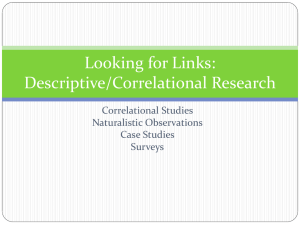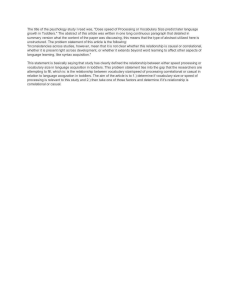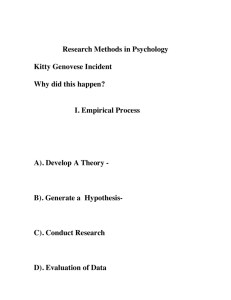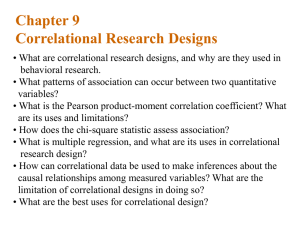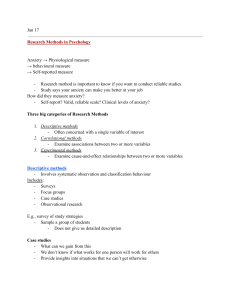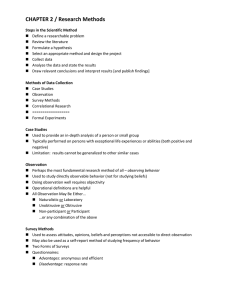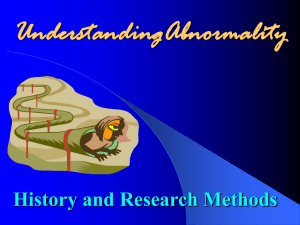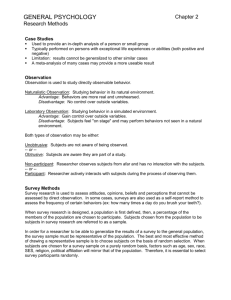Correlational Studies (A Method in the Biological Perspective)
advertisement
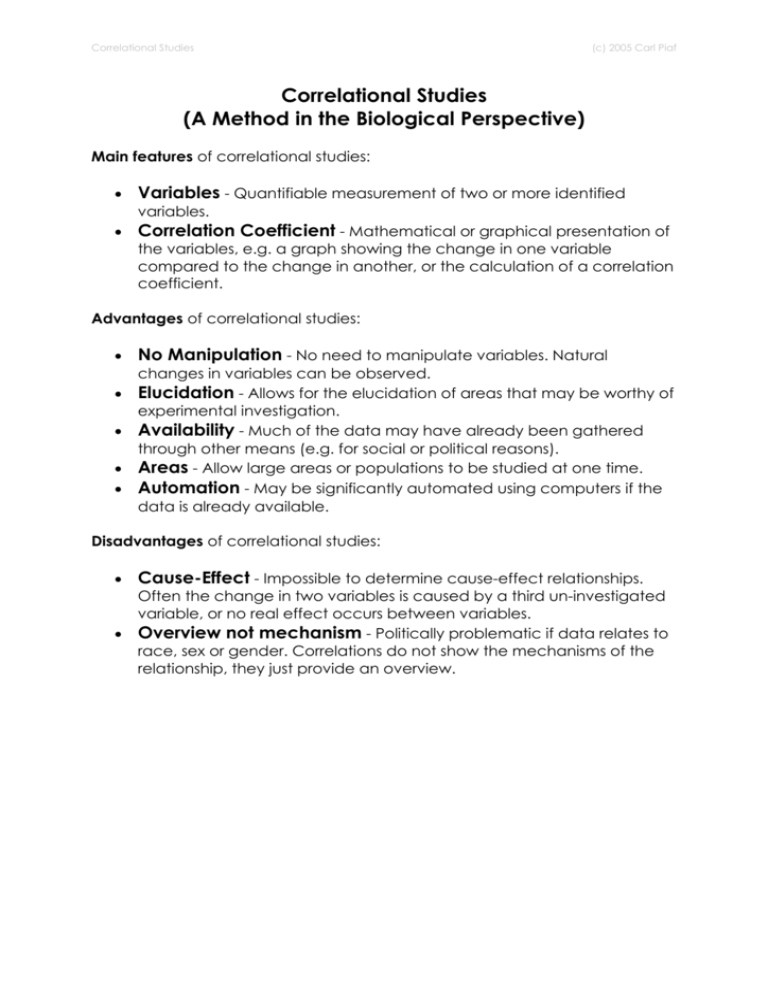
Correlational Studies (c) 2005 Carl Piaf Correlational Studies (A Method in the Biological Perspective) Main features of correlational studies: • Variables - Quantifiable measurement of two or more identified variables. • Correlation Coefficient - Mathematical or graphical presentation of the variables, e.g. a graph showing the change in one variable compared to the change in another, or the calculation of a correlation coefficient. Advantages of correlational studies: • • • • • No Manipulation - No need to manipulate variables. Natural changes in variables can be observed. Elucidation - Allows for the elucidation of areas that may be worthy of experimental investigation. Availability - Much of the data may have already been gathered through other means (e.g. for social or political reasons). Areas - Allow large areas or populations to be studied at one time. Automation - May be significantly automated using computers if the data is already available. Disadvantages of correlational studies: • • Cause-Effect - Impossible to determine cause-effect relationships. Often the change in two variables is caused by a third un-investigated variable, or no real effect occurs between variables. Overview not mechanism - Politically problematic if data relates to race, sex or gender. Correlations do not show the mechanisms of the relationship, they just provide an overview.

